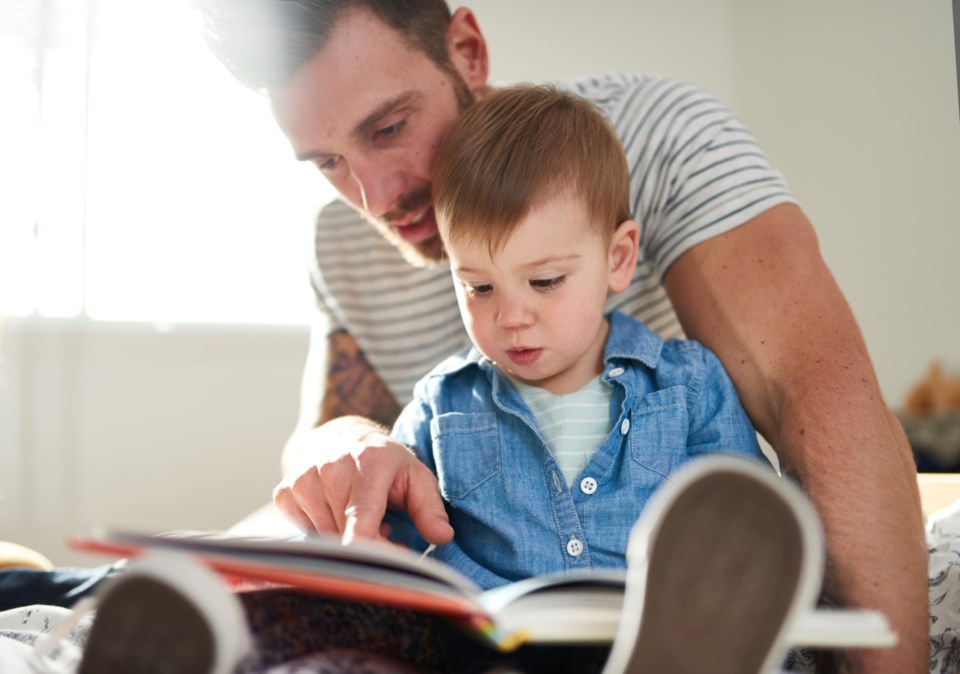This article by Emiko Muraki, University of Calgary and Penny Pexman, University of Calgary originally appeared on the Conversation and is published here with permission.
For adults, communicating in our first language feels easy and natural. Yet learning language is a complex process that is influenced by several factors.
When young children are beginning to learn language, some influences, such as the amount of speech a child hears and the amount of time they spend in back-and-forth language interactions with others, have what may appear to be obvious connections to language learning. Perhaps less obvious is that children’s own physical experiences with their environment help them learn new words.
In new research in the cognitive sciences, we investigated how this is the case by considering how children learn words that refer to something you can touch, grasp and interact with. We asked parents to rate how easily a child can physically interact with the object, idea or experience that a word refers to. We found words that refer to objects that are easy for children to interact with are also words that are learned at an earlier age.
Spoon: Something you touch
For instance, a word like spoon is usually learned earlier than a word like sky. And this relationship remains even when we consider other things that can affect word learning, like how common a word is in everyday language.
Words like spoon and sky are both relevant to everyday life, and so children will probably hear those words quite early in their development. One difference between them is that spoon refers to something you can touch, grasp and interact with, whereas sky does not.
Why physical experience helps
Our findings agree with those of studies where babies and toddlers wore small head-mounted body cameras to record their interactions with objects. Those studies show that the children’s own physical experience helps them learn new words.
For instance, in one study researchers found that 18-month-old toddlers were more likely to learn the name of a new object when they held that object, and less likely to learn the name if their parent held the new object. Another study found that 15-month-olds who spent more time manipulating new objects had learned more nouns by the time they were 21 months old.
Body cameras allow researchers to see the environment from a child’s point of view. This gives researchers clues as to why it is easier for children to learn the names of objects they get to touch and hold. At any given time, there are many different objects in a child’s vision. When a parent names an object in the environment, a child must figure out which object the parent is talking about. But when a child is holding or touching a specific object, that object is much closer to them and fills more of their vision, making it easier for them to connect the word the parent has used with the object they see.
Child interactions
Physical experience is also related to how children use and process language. Words like spoon that refer to objects that are easy for a child to interact with are named faster by children as young as six years old. This is probably because the child’s physical experience makes it easier to connect a word’s meaning with the written letters or spoken sounds of the word itself, a process that happens every time we read or hear a word.
A more recent study also found words that refer to objects that are easy to interact with were easier to read and recognize for children in grades 2 and 4. Interestingly, the researchers also found that children who had more screen time each day were less likely to show this benefit: they were not as fast or accurate when recognizing words that refer to easy-to-interact-with objects. This is because increased screen time may reduce the quantity and quality of physical experiences that children have with objects in their environment.
Play-and-tell matters
Word learning is easier when a child can interact with an object while hearing that object’s name, rather than seeing the object presented by a parent or on a screen. This isn’t possible for all objects, and children will learn the words for concepts they can’t touch, like sky, even without physical interaction. But this research shows that it can be helpful to give children opportunities to touch and feel the things they are learning the words for, as long as it is safe to do so.
When children get to touch, grasp and interact with things in their environment they develop their motor skills. By studying how children learn different sorts of words, our research exemplifies the ways that physical experiences are not just important to a child’s motor learning, but also to their word learning.
This means that giving children more opportunities to physically interact with their actual, rather than virtual, environment is good for their bodies and for their brains.![]()
Emiko Muraki, PhD Candidate, Brain & Cognitive Science, University of Calgary and Penny Pexman, Professor of Psychology, University of Calgary
This article is republished from The Conversation under a Creative Commons license. Read the original article.
